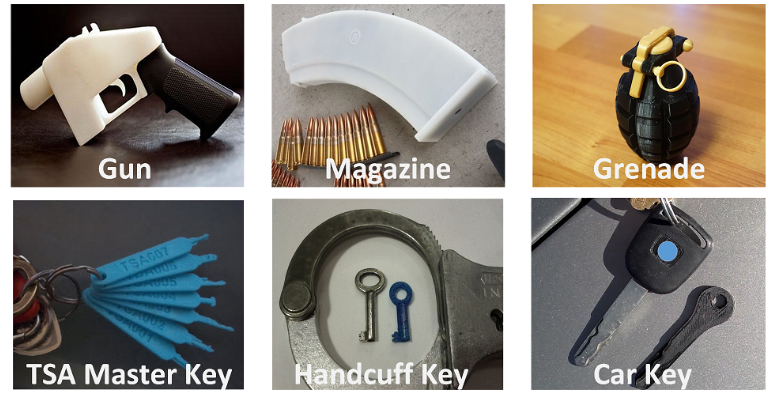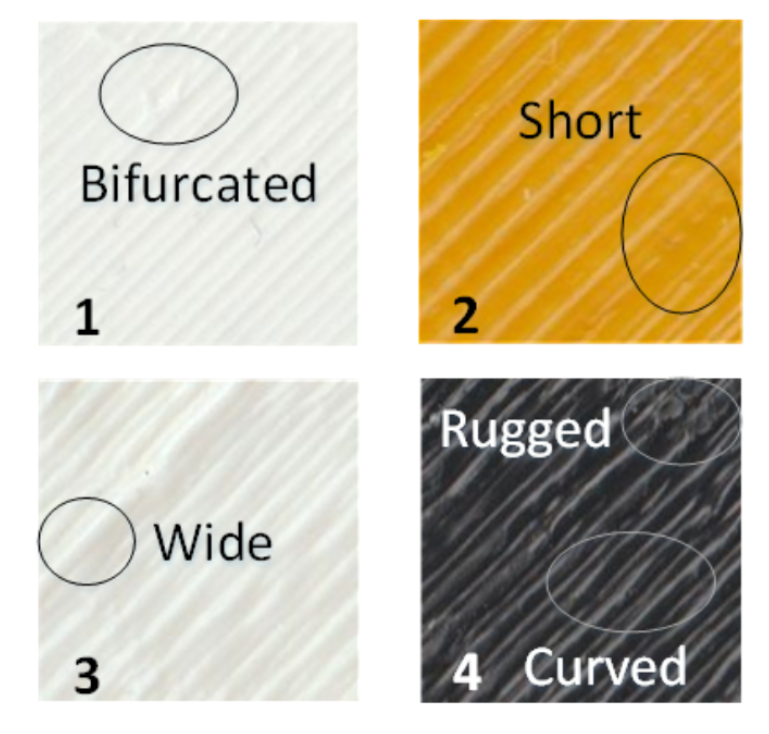By the structure of the material of the printed item, you can determine the model of the 3D printer and the specific device.

Part of the potentially tracked items found, for example. at the crime scene
3D printing has long been firmly entered our life. Someone has a 3D printer at home, someone - at work, well, someone orders the necessary parts via the Internet. The convenience of such a system does not cause doubts - there are, of course, difficulties, but there are quite a few merits.
Even plastic firearms are printed on 3D printers - the first such gunshot was the Liberator pistol. Now 3D print enthusiasts even create rifles that are not at all disposable, like the Liberator was. Officials of different countries are fighting with lovers of “printed” weapons, since there is a completely non-zero probability that the firearm, which cannot be traced, will be used for good purposes. So far, the struggle is won by adherents of the idea of free weapons, but the situation may well change, and soon.
The fact is that according to the peculiarities of printing the part, the characteristics of the structure, it is possible to determine on which particular 3D printer the part was made. This is about the same as the definition of the typewriter on which the ransomware message was made, or the detection of a conventional inkjet printer for various characteristics of the printed text, including tags specially added by the manufacturer.
')
As for firearms, Cody Wilson became the first person who created a real system capable of sending a bullet into the flight (by the way, now it’s being dealt with, and it’s not being built on weapons charges, but on relationship with a minor).
Cody Wilson became the leader of the free weapons movement, now this movement has many followers who will work and work without Cody.
So, as far as tracking a weapon printed on a 3D printer, engineers, under the guidance of Wenyao Xu from New York University in Buffalo, developed a technique that allows you to do this. The technology, according to the authors of the project, allows you to determine the place of printing weapons even if the printer is at home.

Distinctive features of the structure of the same part, printed on different printers
The principle is quite simple - the fact is that almost no 3D printer prints perfectly smooth parts (with the exception of some very expensive models). And the irregularities, roughness, remaining on the surface of the printed object, are individual for each device. The cause of irregularities in the imperfectly fitted gears, the features of the entire mechanism as a whole, marks on the extruder, etc.
The authors of the project investigated a large number of parts printed on a variety of printers and determined that the structure of the layers of plastic really differs from part to part and from printer to printer. In almost all cases, you can find a certain identifier of a particular printer.
Based on these data, scientists have developed an algorithm for studying the structure of the surface of the part. The first step is to take photographs of the surface of the printed item. You can even make it with a not-too-high-quality camera (within reason, of course). Then the images are fed to a special program that analyzes the features of the location of the layers of plastic. The program identifies about 20 different characteristics of the distribution of layers and “blots”.
After the analysis results are ready, all data is transferred to the classifier, which, in turn, determines which printer model and which device printed the part. If it is not possible to determine a specific device, the program reports this.
The researchers did not have the opportunity to examine thousands of 3D printers, they used 14 printers from 6 different manufacturers, the most popular devices. Basically, these systems work with such types of plastic as photopolymer, ABS and PLA plastic. Printers that hit the base use the two most popular printing methods - FDM and SLA.
In order to teach the algorithm to correctly identify the printer model and a specific device, he was trained by downloading about 2100 images into the database. After that, the system was tested by loading test photos. As it turned out, after not too long training, the accuracy of the system was 92%.
The results of their work, scientists presented in the article .
Source: https://habr.com/ru/post/427249/
All Articles